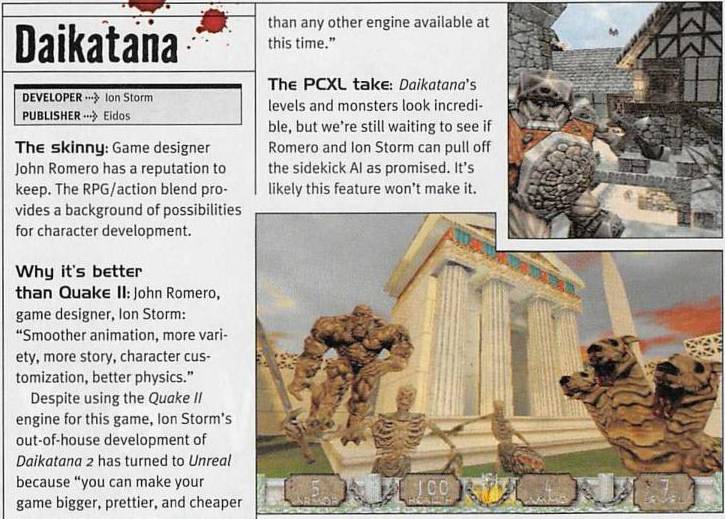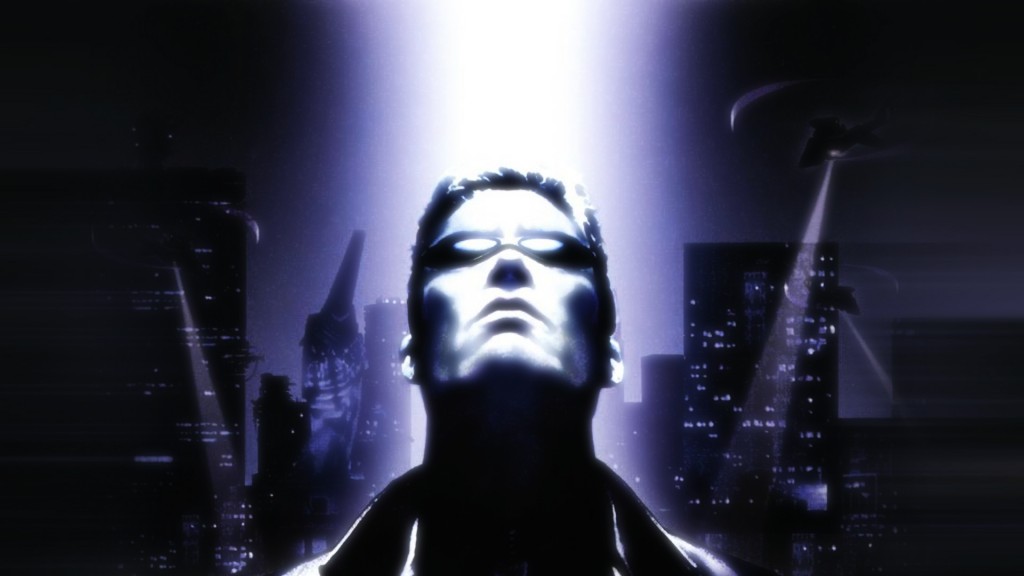Daikatana 2 is the cancelled sequel to John Romero‘s first and most ambitious FPS since his departure from id Software and the founding of Ion Storm. This sequel was in development with the help of Human Head Studios while Ion Storm was still working on the first game (as told by Romeron at PC Accelerator magazine), but no screenshots nor artwork were ever shown to the public before its cancellation.
It seems development on the sequel started in early 1998, when no one imagined that the first Daikatana would take so many years to be released, nor that it would bomb so hard when published. Former Human Head developers shared memories of the project in interviews and articles published by Eurogamer and GamesRadar:
“We first met John when he was the producer on Heretic and Hexen, so when we left Raven we thought, who better to work with than John Romero! Initially Ben Gokey called him up, told him the story, and he asked us to work on Daikatana 2. Of course we jumped at the chance.”
“Ion Storm funded us enough money for a few living expenses and some new equipment. This in turn meant that we would be using the Unreal engine, and that was extremely exciting.”
Unfortunately by this time Ion Storm was already in decline, Daikatana was becoming a running joke, and Eidos were starting to wonder where all their money was going. Hiring an external studio to develop a sequel to a game that was nowhere near complete was one expense which they could do without. And so, “before we knew it the project was canceled and we were on our own again”.
Human Head would live to fight another day though. “When Daikatana 2 was canceled, Epic was incredibly nice and let us use the Unreal engine even though we didn’t have any contracts with any publishers.”
One of Prey’s concepts even came from past projects that Human Head had worked on. The idea of wall-walk boots originally came up during initial work the studio did for Daikatana 2. That game never happened, and after that, Human Head started talking to Epic about handling Unreal 2. One of its ideas for that project: yup, those wall-walk boots. Human Head didn’t end up doing Unreal 2 either, which was Prey’s gain. “Fast forward to Prey, we were like ‘Alright, we would love to be able to do wall-walk boots,'” Rhinehart says. “So I’m glad that we finally managed to get that particular tech in the game.”
The first Daikatana was postponed several times due to constant technical problems, forced engine changes and internal disagreements in the team. In 2000 the game was finally released and under the hooting of the press, it failed in sales and Ion Storm Dallas disappeared the following year. Human Head Studios later worked on Blair Witch Volume II: The Legend of Coffin Rock and Rune.
If you know someone who worked on Daikatana 2 and could help us preserving some artwork, screenshots or files from this lost game, please let us know!
Thanks to Josef for the contribution!
Images:


